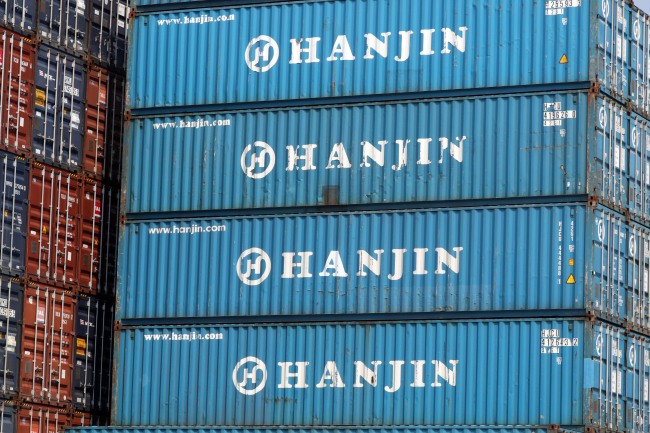From Busan to Spain and the US, Hanjin Shipping’s vessels were arrested by debtors and denied access to ports for overdue operation fees Thursday, prompting frightened cargo owners to cancel contracts and request their freight back.
Just a couple of months ago, few in Korea would have thought that Hanjin, Korea’s largest container carrier, would fall like this.
Just a couple of months ago, few in Korea would have thought that Hanjin, Korea’s largest container carrier, would fall like this.

Moving a big chunk of Korea’s exports to the world on its over 150 fleet, the company was considered too big and too important to fail in this small country in the Far East that relies on global consumers to grow its economy.
Yet, Hanjin is fast sinking under heavy losses and unpaid debt, becoming a symbol of Korea’s toughened stance on corporate bailouts.
“This could be a turning point in the history of corporate restructuring in Korea,” said Kim Sang-jo, a professor at Hansung University.
“(In the past) many unviable companies were allowed to hang on under the pretext of protecting the local industry and economy.”
Hanjin Shipping filed for court receivership Wednesday, one day after its main creditor Korea Development Bank decided to end all support.
The company had 6.8 trillion won ($6.07 billion) in liabilities, 565 billion won in equity capital and a debt ratio of over 1,100 percent at the end of June. It has been under a creditor-led debt settlement program since May.
“When taxpayers’ money is involved, we have to be strict with our principles,” said KDB CEO Lee Dong-geol, rejecting Hanjin’s proposal to raise 500 billion won in fresh funds as insufficient.
Hanjin needs 1 trillion won to 1.3 trillion won to roll over its debt. If KDB injects more money now, it will end up going to the firm’s foreign debtors as it currently has over 600 billion won in overdue payments overseas.
Hanjin Shipping’s predicament has ramifications for other large companies with debt problems.
As Korea moves to restructure the crisis-hit shipbuilding, construction and steel industries, KDB holds the key to the fate of many ailing companies, including the country’s No. 2 shipyard Daewoo Shipbuilding and Marine Engineering.
Observers say financial authorities have toughened their stance on corporate rescues, after recent cases highlighted how bailouts were conducted with political considerations and without proper accounting scrutiny.
KDB’s own subsidiary Daewoo Shipbuilding, after injections of a whopping 4.2 trillion won over the past few years, is still struggling with financial difficulties. Furthermore, it is under prosecutorial investigation for accounting fraud worth more than 5 trillion won.
In another blatant example of a failed bailout, the KDB led other creditors to pour 4.5 trillion won into STX Offshore and Shipbuilding since April 2013, only to see it file for court receivership earlier this year.
The Financial Services Commission’s Yim Jong-yong stressed a principle-based approach in corporate restructuring going forward -- that the fate of companies, once deemed unviable by their creditors, should be left to the market.
“When a creditor-led normalization program fails at a troubled firm, it should be dealt with in accordance with principles,” he said.
By Lee Sun-young (milaya@heraldcorp.com)
-
Articles by Korea Herald











![[Hello India] Hyundai Motor vows to boost 'clean mobility' in India](http://res.heraldm.com/phpwas/restmb_idxmake.php?idx=644&simg=/content/image/2024/04/25/20240425050672_0.jpg&u=)








